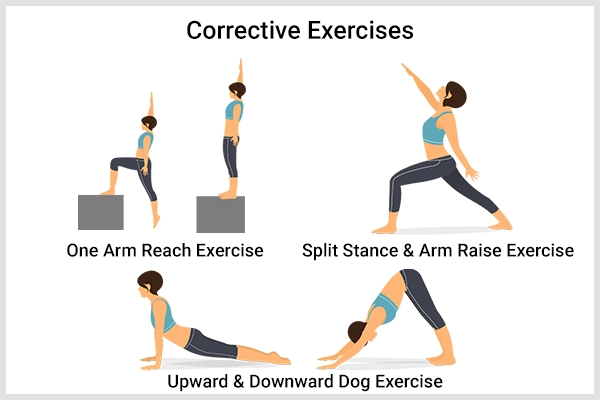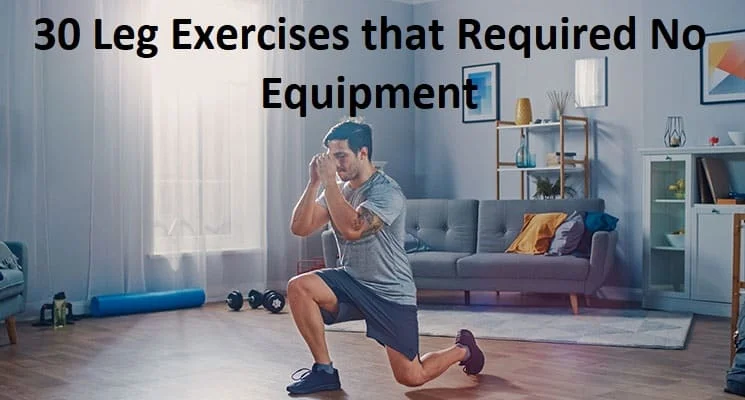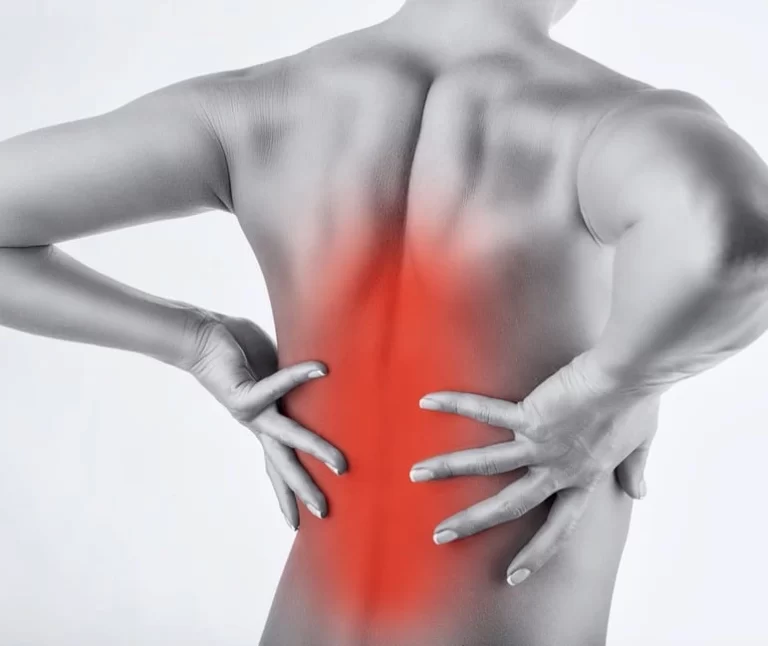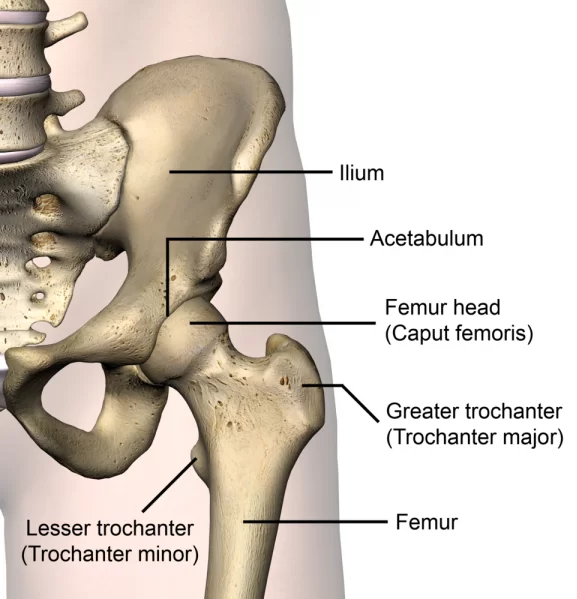21 Best Exercises for Scoliosis
Can exercising help to treat Scoliosis?
Exercise can be a valuable part of treating scoliosis, a condition that causes the spine to curve abnormally. Exercise can be used both to strengthen the muscles that support the spine and to improve the posture and movement of the spine itself. Exercise can help to:
- Strengthen the muscles around the spine
- Strengthen the muscles of the core
- Improve flexibility and range of motion
- Improve balance and muscle strength in the limbs.
- Reduce pain and discomfort
- Improve balance and coordination
- Slow the progression of the curve
- Improve the quality of life
For people with scoliosis, it is important to work with a physical therapist or other healthcare professional to develop an individualized exercise program. This is because the specific exercises that are most beneficial will vary depending on the severity of the curve, the location of the curve, and other factors.
What is Scoliosis?
Scoliosis is a sideways curvature of the spine. Everyone has normal curves in the spine, but when looked at from behind, the spine appears straight. However, individuals with scoliosis have an irregular S-shaped or C-shaped curve of the spine. The curve can occur on either side of the spine and in various places in the spine.
The curve may have a small, large, or medium angle. however, On an X-ray, anything that measures higher than 10 degrees is classified as scoliosis. Doctors may refer to the curvature as having a “C” or “S” shape.
Scoliosis can vary in severity from mild to extreme. In most individuals, the reason for scoliosis is unknown. Mild scoliosis curves are usually less than 10 degrees and do not require treatment. More severe scoliosis curves can cause pain, back problems, and breathing difficulties.
Causes of Scoliosis
Certain types of scoliosis have obvious causes. Both structural and nonstructural categories of these curves are recognized.
Nonstructural scoliosis: The spine seems to be curled but functions normally in nonstructural scoliosis. Having one leg longer than the other, muscular spasms, and inflammations like appendicitis are a few causes of this. The scoliosis frequently disappears when these issues are resolved.
Structural scoliosis: The curvature of the spine is rigid and unchangeable in structural scoliosis.
some causes are:
- Cerebral palsy
- Muscular dystrophy
- Birth defects
- Chest wall surgery
- Infections
- Tumors
- Hereditary disorders like Marfan syndrome & Down syndrome
Types of Scoliosis
Types of scoliosis according to the angle of the curve in the spine
C-shaped scoliosis
This is the most common type of scoliosis, and it is characterized by a single curve in the spine that resembles the letter C.
S-shaped scoliosis
This type of scoliosis is characterized by two curves in the spine, one in the upper back and one in the lower back.
Levoscoliosis
This type of scoliosis is characterized by a curve in the spine that curves to the left.
Dextroscoliosis
This type of scoliosis is characterized by a curve in the spine that curves to the right.
Types of scoliosis according to the cause
Idiopathic scoliosis
In most people, the cause of scoliosis is unknown its called idiopathic scoliosis. Idiopathic scoliosis is most often diagnosed during puberty.
Congenital scoliosis
This type of scoliosis is present at birth and is caused by a problem with the development of the spine in the womb.
Neuromuscular scoliosis
This type of scoliosis is caused by a condition that affects the nerves or muscles that control the spine.
Degenerative scoliosis
This type of scoliosis develops in adults as the spine ages and wears down.
Symptoms of Scoliosis
- Uneven shoulders
- Uneven hips
- One shoulder edge is superior to the other
- A rib cage that sticks out on one side
- Uneven waistline
- Back pain
- Fatigue
- Shortness of breath (in severe cases)
Treatment for Scoliosis
The degree of curvature and the patient’s age affect the course of treatment for scoliosis. Mild scoliosis curves may only require monitoring and exercise. More severe curves may be treated with bracing or surgery.
Bracing is a non-invasive treatment option that involves wearing a brace to prevent the curve from getting worse. Surgery is typically reserved for severe cases of scoliosis that are causing pain or breathing problems.
Exercise for Scoliosis
There are some general types of exercises that are often recommended for people with scoliosis, including:
- Stretching Exercise: Stretching can help to improve flexibility and range of motion in the spine and surrounding muscles. This can help to reduce pain and discomfort and make it easier to perform other exercises.
- Strengthening Exercise: Strengthening exercises help to build muscle strength in the core and back muscles. This can help to support the spine and reduce the risk of further progression of the curve. Plank and abdominal exercises are often suggested.
- Balance and coordination: Balance and coordination exercises can help to improve overall stability and reduce the risk of falls. This is important for people with scoliosis, who may have an increased risk of falls due to their curved spine.
- Breathing exercises: breathing exercises can promote better lung function and help maintain the best chest mobility.
- Postural exercise: these focus on improving posture and body alignment, which is crucial for the management of scoliosis.
- Yoga: Yoga can help to improve the quality of life for people with scoliosis by reducing pain, improving flexibility and strength, and reducing stress. Find a qualified yoga instructor who has experience teaching people with scoliosis.
- Aerobics Exercise: Low-impact aerobic exercise, such as swimming, and walking, can help to improve cardiovascular health, strengthen muscles and bones, reduce pain and inflammation, and decrease the risk of complications of scoliosis.
- Resistance training: using light weights or resistance bands can help improve overall strength and posture.
Stretching and Strengthening Exercise for Scoliosis
1. Pelvic tilt exercise
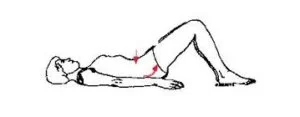
- Pelvic tilt exercises can be helpful for people with scoliosis because they can help to, strengthen the core muscles and hip muscles, Stretch the tight muscles, improve posture, and reduce pain.
- To perform a pelvic tilt, a person should:
- You should be lying on your back with your legs bent, and feet flat on the floor.
- Tighten your abdominal muscles and tilt your pelvis up so that your lower back presses into the floor.
- Hold for 5 seconds, then relax. Repeat 10 times.
2. Cat-Camel exercise
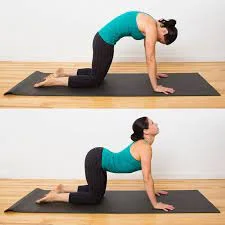
- The starting posture is prone.
- Maintain a tight abdomen with your head straight while on your hands and knees.
- Inhale deeply, elevate your lower ribs, round your back, and relax your neck.
- Lower the chest towards the floor as they exhale and then glance slightly upward.
- Get back to your starting position by tightening your abdomen.
- Do the exercises 10 times in one session and three times each day.
3. Double-Leg Abdominal Press
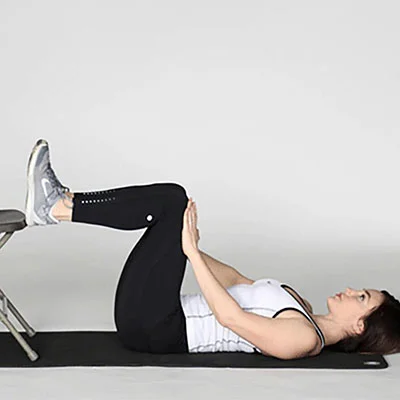
- The double-leg abdominal press is an exercise that targets the core muscles, including the rectus abdominis (abs), transverse abdominis (deep core muscles), and obliques. It is a relatively simple exercise to perform, but it can be challenging to maintain proper form.
- To perform the double-leg abdominal press, follow these steps:
- While lying on your back with your knees bent, your feet should be flat on the ground.
- Your knees should be supported by your hands.
- You may engage your core muscles by bringing your belly button up towards your spine.
- Raise your legs off the floor until your knees are at a 90-degree angle.
- Keeping your core engaged, push your hands against your knees and pull your knees towards your chest.
- After holding for a little moment, carefully return your legs to the beginning position.
- Repeat for 10-15 repetitions or as many as you can with good form.
4. Single Leg Balance
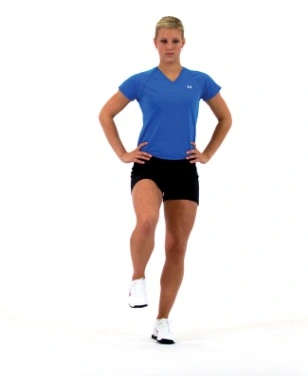
- Single-leg balance exercises can be beneficial for people with scoliosis, as they can help to strengthen the muscles that support the spine and improve balance. This can help to reduce pain and improve posture.
- Standing is the Starting position.
- Bend to one knee and balance on one foot while keeping your eyes open.
- Next, use your hands to support yourself by holding onto objects like the back of a chair, or table, or a wall.
- Take the hand(s) away and position them to the side once the balance is maintained.
- then complete the challenge by crossing your arms over your chest.
- For a bigger task, others are close at hand.
- Perform the exercise 10 times in one session and three times a day.
5. Arm and leg raises

- The arm and leg raise exercise is a great way to work your core, hips, and shoulders. It is a challenging exercise, but it can be modified to make it easier or more difficult.
- To do the arm and leg raise exercise, start on your hands and knees with your back flat. Straighten out your left leg behind you and your right arm in front of you.
- Maintain a strong core and level hips.
- Straighten out your left leg behind you and your right arm in front of you.
- Maintain a strong core and level hips.
- Hold for one or two seconds before resuming your original posture gradually.
6. Abdominal press
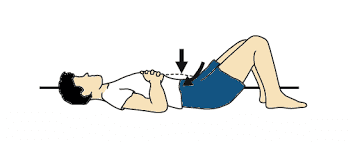
- Their feet should be flat on the ground while they lay on their backs with their knees bent.
- Maintain a neutral, tension-free position for the back.
- Raise both feet off the ground until their knees are higher than their hips and their thighs and feet make a 90-degree angle.
- Pull the knees towards their hands using their core muscles while pushing their knees away with their hands. Since this is a static exercise, pressing should not be done with moving legs or arms.
- Take three deep breaths while holding, then release.
- Make two sets of ten.
7. Step down and one arm reach

- Standing is the Starting position.
- then take the step on the tiny step or box.
- While the knee is bent, lower the opposing leg to the ground.
- Raise the arm to the same side as the lower leg as high as you can throughout the descent.
- For instance, if the left arm is raised and the right foot is lower to the ground.
- This exercise should not be done on the other side.
- Perform the exercise 10 times in one session and three times a day.
8. Upward and downward dog
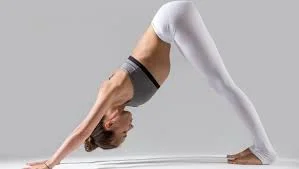
- Starting in a prone plank posture.
- In this pose, the arms are extended in a straight line.
- Then push the hips back & up as far as possible.
- Hold the posture for two seconds, then bring your hips back down to the ground.
- After that, attempt to squat as low as you can without endangering your back.
- Perform the exercise 10 times in one session and three times a day.
9. Split stance with arm reach
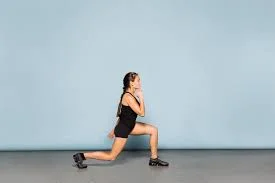
- The split stance with arm reach is a compound exercise that works for multiple muscle groups simultaneously, including the quadriceps, hamstrings, glutes, core, and shoulders.
- It is a great exercise for improving balance, coordination, and strength for scoliosis.
- To perform the split stance with arm reach, follow these steps:
- Stand with your feet shoulder-width apart.
- Step forward with your right leg so that your feet are about hip-width apart.
- Lower your hips until your left knee is hovering just above the ground.
- Make careful to keep your back straight and your core muscles stretched.
- Reach your left arm overhead, keeping your elbow straight.
- Slowly return to the starting position.
- Repeat on the other side.
10.Latissimus dorsi stretch
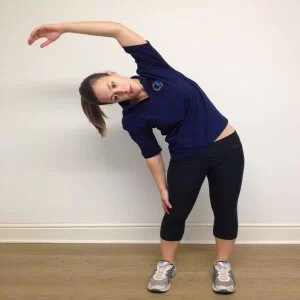
- Standing is the Starting position.
- Maintain a straight posture while you stand in the neutral position.
- Keep your feet shoulder-width apart and slightly bent knees.
- Next, extend both hands upward and grip the right wrist with the left.
- When the patient feels a stretch on the left side of the body, bend slightly to the right.
- After holding for one to two breaths, push with your left foot to go back to your starting position.
- On the opposite side, repeat the exercise.
- Do the exercise 10 times in one session and three times each day.
11. Seating Rotation Stretch
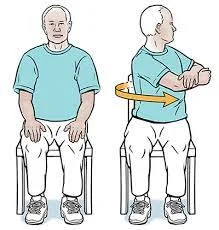
- The seated rotation stretch is a great way to improve your flexibility in your spine, shoulders, and hips.
- Follow these instructions to perform the sitting rotation stretch.
- Your back should be straight while you sit in a chair with your feet flat on the floor.
- Place your feet flat on the floor while you sit on a chair with your back straight.
- Gently rotate your torso to the right, keeping your hips and legs facing forward.
- After between 10 and 15 seconds of holding the stretch, carefully return to the beginning position.
- Repeat on the other side.
Yoga for Scoliosis
Yoga is a gentle and effective way to manage scoliosis. It can help to improve flexibility, strengthen the muscles around the spine, and reduce pain and inflammation. Yoga can also help to improve posture and balance, which can be helpful for people with scoliosis.
1.Bridge Pose (Setu Bandha Sarvangasana)
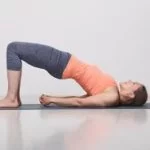
Bridge Pose is a good pose for strengthening the hamstrings, glutes, and core. Additionally, it might aid in expanding the chest and enhancing respiration.
To do the Bridge Pose, lie on your back with your legs bent and your feet flat on the floor.
Raising your hips off the floor will help you get your body into a straight line from your shoulders to your knees.
Hold for 5-10 breaths.
Hold for 5-10 breaths, Repeat 5-10 times.
2.Cat/Cow Pose(Marjaryasana-Bitilasana):
- Cat/Cow Pose is a good pose for warming up the spine and improving flexibility.
- To do the Cat-Cow pose, start on your hands and knees with your back flat and your hands shoulder-width apart.
- Lift your head and tailbone while inhaling and arch your back.
- Draw your shoulders back and chin towards your chest as you exhale. 5–10 times, then stop.
3. Child’s Pose(Balasana)

- The child’s Pose is a restful pose that can help to stretch the back and neck.
- Kneel on the ground with your legs hip-width apart to do the child’s pose.
- Your forehead should be resting on the ground as you fold forward while sitting back on your heels.
- Extend your arms overhead with your palms down.
- Hold for 5-10 breaths, Repeat 5-10 times.
4.Side Plank(Vasisthasana)
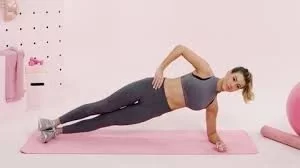
- Side Plank is a challenging pose that can help to strengthen the muscles on the sides of your spine.
- To do Side Plank, start in a push-up position with your forearms on the ground and your shoulders stacked over your elbows.
- Roll onto your right forearm and lift your left arm overhead.
- Lift your hips off the ground while placing your left foot on top of your right foot.
- From your head to your heels, draw a straight line.
- Hold for 5-10 breaths and then repeat on the other side, Repeat 5-10 times.
5.Downward Dog(Adho Mukha Svanasana)
- Downward-Facing Dog is a classic yoga pose that can help to lengthen the spine and strengthen the hamstrings, calves, and core.
- Starting on your hands and knees with your knees hip-width apart and your hands shoulder-width apart, perform a downward-facing dog.
- Lift your knees off the floor while tucking your toes under. Press your hips up and back and straighten your legs as much as possible.
- Keep your back straight and your head between your arms.
- Hold for 5-10 breaths, Repeat 5-10 times.
6.Mountain pose(Tadasana)
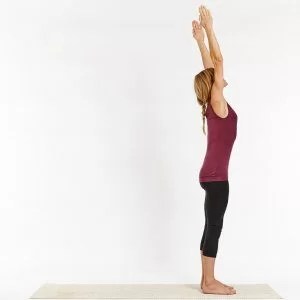
- Mountain pose is a standing yoga pose often considered the foundation of all other standing poses. It is a simple pose, but it can be challenging to hold correctly.
- The mountain pose helps to improve posture, balance, and body awareness. The legs and core are also strengthened by it.
- To do the Mountain pose, stand with your feet hip-width apart and your heels slightly apart.
- Ground down through your feet and spread your toes wide. Engage your quadriceps and draw your kneecaps up. Lift your chest and lengthen your spine.
- Draw your shoulders back and down, and let your arms hang naturally at your sides. Keep your gaze focused forward.
- Hold the Mountain pose for 5-10 breaths. As you breathe, focus on rooting down through your feet and feeling the energy rise up through your body. Pay attention to your alignment and make adjustments as needed.
Here are some additional tips for practicing yoga with scoliosis:
- Avoid poses that put a lot of compression on the spine, such as backbends.
- Focus on poses that lengthen and strengthen the spine, as well as poses that improve balance and posture.
- Use props, such as blocks and straps, to help you to modify poses as needed.
- Listen to your body and come out of any pose that causes pain.
If you have scoliosis, yoga can be a safe and effective way to manage your condition. It is important to start slowly and work with a qualified yoga teacher.
Breathing exercise for Scoliosis
Schroth exercises
- Schroth exercises are a type of physical therapy that is specifically designed to help people with scoliosis.
- All areas of the trunk, thorax, and belly expand during respiratory action with the aim of enhancing the volume of air intake to the lungs.
- The thoracic cage, inhalation muscles, and lung mass, which are connected by two sheets of pleural space, constitute two elastic systems that move in opposite directions during respiration.
- The trunk undergoes structural changes as a result of the scoliosis deformation process. In some places, the trunk bulges out or becomes convex, whereas in other places, it decreases or becomes concave. The mechanics of breathing are abnormal. All of the trunk’s muscles become unbalanced as a result of the abnormality.
- Scoliosis-related asymmetry results in a changed breathing pattern known as “scoliosis breathing,” which may increase curvature and rotation. On opposite sides, the muscles that go down the spine also become unbalanced.
- The patient learns to lengthen the muscles on the concave side of the spine and shorten the muscles on the convex side during Schroth training. In order to reduce the danger of curve progression, patients can learn to alter their breathing patterns.
- Patients breathe into the concave side of their trunks during the exercise’s “inhalation” phase, which helps expand collapsed regions. The next phase, known as the “exhalation,” involves the patient isometrically contracting their muscles to strengthen and stabilize the muscles around them.
- Schroth exercises focus on strengthening the muscles around the spine and helping people to maintain a more upright posture.
- If you have scoliosis, talk to your doctor or physical therapist about whether Schroth exercises would be right for you.
Schroth exercises focused on
- Restoring muscle symmetry and postural alignment
- Breathing into the body’s concave side
- Educating you on postural awareness
Benefits of the Schroth exercises
- Cobb angle decreased before the development of the skeleton
- Delayed development of the curve
- Disc degeneration
- Better posture appearance
- Reduce or get rid of pain if pain is present
- Improvement in balance and spinal stabilization
- Chest expansion and improved lung function
- Increase your flexibility and strength
- Regaining control of scoliosis
Rotational angular breathing
Rotational angular breathing is a breathing exercise that is used in the Schroth method, a type of physical therapy for scoliosis. It helps to expand the collapsed areas of the rib cage and strengthen the muscles around the spine.
To do rotational angular breathing, follow these steps:
- Lie on your back on a firm surface with your knees bent and your feet flat on the floor.
- Give your head some support by placing a cushion there.
- Take hold of your tummy with one hand and your chest with the other.
- Inhale slowly and deeply through your nose, filling your stomach with air. Your stomach should rise as you inhale.
- As you exhale, slowly rotate your spine towards the side of your convex curve. Your chest and stomach should follow your spine as you rotate.
- Continue to breathe deeply and rotate your spine with each exhale. Hold each rotation for 5-10 seconds.
- Repeat steps 3-5 on the other side.
- Do 10-15 repetitions on each side.
Suggestions:
- Make sure to keep your neck relaxed and your shoulders down throughout the exercise.
- Focus on breathing deeply and slowly.
- Don’t force the rotation of your spine. If you sense any pain throughout the activity, stop.
- You can place a foam roller or folded towel under your convex curve to help support your spine.
If you are new to rotational angular breathing, it is a good idea to learn it from a qualified Schroth therapist. They can help you to ensure that you are doing the exercise correctly and safely.
Diaphragmatic breathing
This type of breathing uses the diaphragm, a muscle located below the lungs, to expand the lungs and draw in air.
To do diaphragmatic breathing:
- Take hold of your tummy with one hand and your chest with the other.
- Your stomach should rise as you inhale, but your chest should not move.
- Your chest should not move when you exhale, and your stomach should drop.
Pranayama
Pranayama is a Sanskrit word that means “breath control.” There are many different types of pranayama exercises, but some that may be beneficial for scoliosis include:
Nadi Shodhana (alternating nostril breathing)
This exercise helps to balance the left and right sides of the body.
To do Nadi Shodhana,
- Sit comfortably in a straight-backed position with your eyes closed.
- Your right thumb should be placed over your right nostril, and your right ring finger should be placed over your left nose.
- Keeping your right nostril closed, inhale deeply through your left. Seal your left nostril after that, and exhale through your right one.
- Continue alternating nostrils for 5-10 minutes.
Bhramari (bee breath)
This exercise helps to calm and relax the mind.
To do Bhramari:
- Take a comfortable seat and close your eyes while maintaining a straight back.
- Place your thumbs in your ears and your index fingers in the corners of your eyes.
- Take a deep breath through your nose and then exhale slowly through your mouth while making a humming sound like a bee.
- Continue for 5-10 minutes.
Before beginning any new workout program, it’s crucial to speak with your doctor or physical therapist, especially if you have scoliosis. They can help you to develop a safe and effective exercise plan that meets your individual needs.
Scoliosis Exercise Video
Postural correction for Scoliosis:
- Postural correction is important in scoliosis management.
- Good posture can help to reduce pain and muscle tension in people with scoliosis. It can also help to improve breathing and circulation and reduce the risk of developing further complications.
Correct posture in standing :
To maintain correct standing posture:
- Ensure that your weight is spread evenly while you stand with your feet shoulder-width apart.
- Keep your back straight and your shoulders relaxed.
- Tuck your chin in slightly and keep your head centered over your spine.
- By contracting your abdominal muscles, bring your belly button closer to your spine.
- Keep your knees slightly bent and your ankles aligned under your knees.
Correct posture in sitting:
To maintain correct sitting posture:
- Choose a chair that provides good lumbar support.
- Your knees should be at a 90-degree angle while you sit with your feet flat on the floor.
- Keep your back straight and your shoulders relaxed.
- Tuck your chin in slightly and keep your head centered over your spine.
- Draw your belly button towards your spine by contracting your core muscles.
- Avoid crossing your legs.
Correct posture in Sleeping:
To maintain Correct sleeping posture:
- Sleep on your back or on your side with your spine in a neutral position.
- If you sleep on your back, place a pillow under your knees to maintain the natural curve of your spine.
- If you sleep on your side, place a pillow between your knees to keep your hips and spine aligned.
Suggestions for maintaining correct posture:
Here are some tips for maintaining good posture throughout the day:
- Pay attention to your posture and make any required corrections.
- Take breaks from sitting or standing for long periods of time.
- Exercise regularly to strengthen your core muscles.
- See a physical therapist or other healthcare professional for personalized advice on posture and exercise.
It is important to note that people with scoliosis may have difficulty maintaining perfect posture all the time. This is because their spine is curved in an abnormal way. However, by following the tips above, people with scoliosis can improve their posture and reduce the associated pain and discomfort.
Instruction for the patient in scoliosis
- The most crucial step is to perform the right workouts.
- After that Inform the patient/relatives about the patient’s situation.
- Some physiotherapists advise wearing a brace, such as the Milwaukee brace, to stop your scoliosis from getting worse.
- Physiotherapists also address the patient’s biopsychosocial factors.
- Adolescents who report idiopathic scoliosis, chronic low back pain symptoms, and other comorbidities such as depression, insomnia, stress, anxiety, and daytime drowsiness must be evaluated and treated as the causes of chronic low back pain.
FAQs
Can exercising help to treat scoliosis?
Exercise is especially important for children and adolescents with scoliosis, as it can help to prevent the curvature from progressing. However, exercise can also be beneficial for adults with scoliosis.
Is yoga a treatment for scoliosis?
Yes, there is yoga for scoliosis. Yoga can be a beneficial way to manage the symptoms of scoliosis and improve overall well-being. Yoga poses can help to:
Strengthen the muscles around the spine, which can help to support the spine and reduce the curvature
Improve flexibility and range of motion in the spine, which can help to reduce pain and stiffness.
Correct muscle imbalances that can contribute to the curvature of the spine.
Improve posture, which can help to reduce pain and fatigue.
Does walking help scoliosis?
Yes, walking is a good form of exercise for people with scoliosis. Walking is a low-impact activity that is easy on the spine and joints. It is also a good way to improve cardiovascular health, strengthen muscles, and lose weight.
How can scoliosis be prevented from worsening?
There is no guaranteed way to stop scoliosis from growing, but there are treatments that can help to slow or prevent progression. The best treatment for scoliosis will depend on the severity of the curve, the age of the patient, and the type of scoliosis. Exercising, an improved diet, Surgery.
References
- mes, H. (2023, January 12). The 7 best stretches and exercises for scoliosis. https://www.medicalnewstoday.com/articles/325385
- Ashpari, Z. (2023, May 9). Scoliosis exercises you can do at home. Healthline. https://www.healthline.com/health/scoliosis/exercises-at-home
- Schroth method for scoliosis. (2023, March 14). Johns Hopkins Medicine. https://www.hopkinsmedicine.org/health/conditions-and-diseases/scoliosis/schroth-method-for-scoliosis
- Kaput, K. (2021, October 1). Keep this in Mind While Doing Yoga with Scoliosis. Cleveland Clinic. https://health.clevelandclinic.org/yoga-for-scoliosis/
- Nalda, T., & Nalda, T. (2022b). Yoga For Scoliosis: Poses That Help & Yoga Poses To Avoid. Scoliosis Reduction Center. https://www.scoliosisreductioncenter.com/blog/yoga-for-scoliosis

